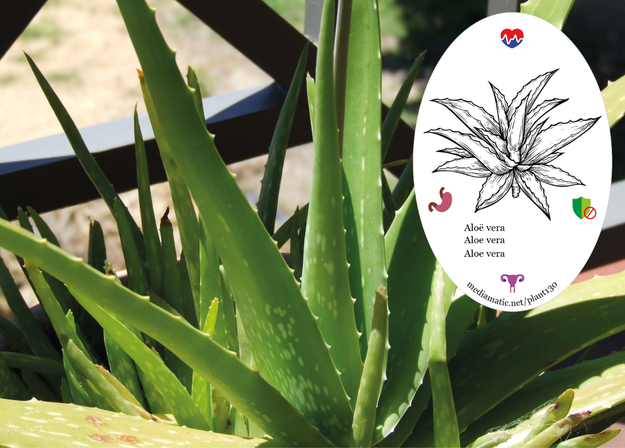Aloe vera is a fairly well known herbal preparation with a long history of use. It is widely used in modern herbal practice and is often available in proprietary herbal preparation. It has two distinct types of medicinal use. The clear gel contained within the leaf makes an excellent treatment for wounds, burns and other skin disorders, placing a protective coat over the affected area, speeding up the rate of healing and reducing the risk of infection. This action is in part due to the presence of aloectin B, which stimulates the immune system. To obtain this gel, the leaves can be cut in half along their length and the inner pulp rubbed over the affected area of skin. This has an immediate soothing effect on all sorts of burns and other skin problems. The second use comes from the yellow sap at the base of the leaf. The leaves are cut transversally at their base and the liquid that exudes from this cut is dried. It is called bitter aloes and contains anthraquinones which are a useful digestive stimulant and a strong laxative. When plants are grown in pots the anthraquinone content is greatly reduced. The plant is emmenagogue, emollient, laxative, purgative, stimulant, stomachic, tonic, vermifuge and vulnerary. Extracts of the plant have antibacterial activity. Apart from its external use on the skin, aloe vera (usually the bitter aloes) is also taken internally in the treatment of chronic constipation, poor appetite, digestive problems etc. It should not be given to pregnant women or people with haemorrhoids or irritable bowel syndrome. The plant is strongly purgative so great care should be taken over the dosage. The plant is used to test if there is blood in the faeces. This plant has a folk history of treatment in cases of cancer. The German Commission E Monographs, a therapeutic guide to herbal medicine approve Aloe vera for constipation. In Chinese medicine it is used for fungal diseases. In Indian medicine it is used for stomach tumours, constipation, colic, skin diseases, amenorrhoea, worm infestation and infections. Source: https://pfaf.org/
Aloe vera
Aloe vera
Find more about this plant on Wikipedia.
